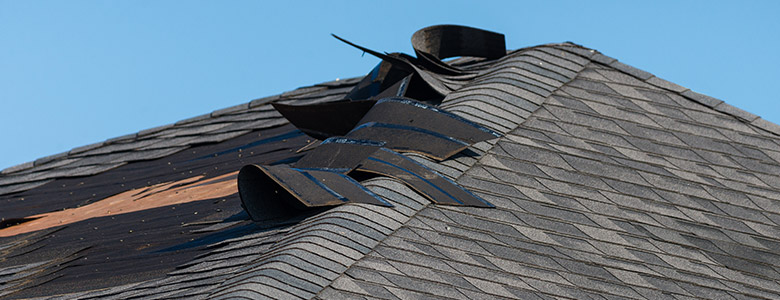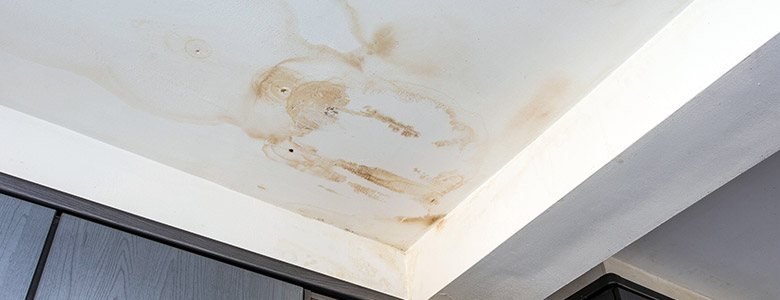The Roof Storm Damage Checklist Every Homeowner Needs

Storm damage is one of the main problems that can shorten the lifespan of your roof. While regularly maintained roofs can last 20-50 years, sudden emergencies like a large storm can wreak havoc on your home.
Going over a brief checklist is a wise idea if you want to ensure your roof is in good condition after a storm.
Learn how to spot storm damage to your roof in this guide from your local roofing experts.
Check for Common Types of Roof Storm Damage in Minnesota
All kinds of storms can impact your roof! So whenever there’s severe weather, homeowners should have a plan for responding to any potential damage.
The four main types of roofing damage to look out for are wind, hail, heavy rain, and flying debris.
Wind Damage
Strong winds during a storm can lift and dislodge roofing materials, exposing the underlying structure to water damage.
Additionally, wind pressure can create uplift forces, potentially tearing off entire sections of a roof.
Hail Dents
When hail damage occurs, you’ll notice. During a hailstorm, hailstones can impact the roof with significant force, causing dents, cracks, and even punctures in roofing materials.
This damage weakens the roof's integrity, leading to potential leaks and further structural issues if left unaddressed.
Heavy Rain Infiltration
Intense rains could lead to standing water on the rooftop or cause leaks. That’s because heavy rain during a storm can overwhelm the drainage system of a roof, leading to ponding and water pooling, which can seep through cracks and compromise the roof's waterproofing.
Additionally, prolonged exposure to heavy rain can accelerate the deterioration of roofing materials, potentially causing leaks and structural damage over time.
Flying Debris Impact
In a storm with high winds, flying debris such as branches, loose objects, and even projectiles can impact a roof, causing significant damage like punctures, tears, and dislodging of roofing materials.
This impact can weaken the roof's structure and compromise its ability to protect the building from further weather-related damage.

Check for Roof Damage After a Storm
Storm damage can lead to extensive home repairs, primarily if water builds up and leaks into the house. Water damage causes a massive, time-consuming headache, so don't put off checking for damage!
After a storm, you can follow this checklist for signs of roofing damage. Always be careful not to step on the roof, as a storm could make the surface less sturdy.
If the area seems compromised, letting a local roofing company get a better look is much safer.
Pay Attention to the Chimney
Look over chimneys and other prominent parts of the roof for potential damage. Most commonly you will find cracked masonry or possibly bricks lying on the ground and unseated or damaged chimney caps or chase covers.
Shingle Damage Can't Be Ignored
Check the shingles for issues such as cracking or curling; in a really bad storm, some might even be missing, or you may find granules in the gutter system or on the ground.
Consider All Roofing Parts
Examine roof vents for denting or cracking, and keep in mind they are directly linked to the ventilation in your home, so keep an eye out for signs of leaks or cold and hot spots that have just popped up after the storm.
Include the Siding
Go around the home and check for siding damage. It's not uncommon to find holes, cracks, and even peeling paint, all of which can indicate that your siding is not effectively protecting your home.
Check the Gutters
Make sure the gutters are clear of debris to avoid water leaks. If you notice the system is sagging, warping, or cracked, address it immediately to keep your home protected from water damage.
Look for Interior Signs of Damage
Inspect the ceilings inside the house and the attic if you have one. Look for spots with discoloration in copper, yellow, and brown shades, and keep an eye out for peeling, bubbling,
or cracking in your wallpaper or paint.
Your attic can display other issues like wood rot, mold, or a musty smell within 48 hours after the damage.

Check All the Documentation for Your Insurance Claim
Documentation is everything for your claim, and once it's safe to do so, get plenty of video footage and take high-quality photos of any areas around your property of concern.
While you are doing the roofing inspection, it's also recommended that you check out windows, fences, and outdoor equipment like A/C units, pool decking, or play areas to determine if they need to be included in the claim.
Check Out Restoration Experts Near You
Last but not least, having an expert assess the damage is one of your best options to help support your claim and ensure that you get all the needed repairs.
A pro will know what to look for and what the repercussions are for not repairing the damage, so make sure you contact a local and trusted company that will help you with the insurance claims process.
If you notice clogs, leaks, broken shingles, ceiling damage, or any other roofing concern, it's best to take action. Roofing restoration professionals will assess the damage and get your roof back to stable, safe condition.
Get Reliable Roof Repair for Your Twin Cities Home Today!
Is your roof showing signs of destruction after a storm? Don't worry; Platinum Restoration can help. We provide local roofing services, including roof repair. So, whether you have clogged gutters or missing shingles, our experienced team will fix it up in no time.
Call today at 763-244-1474 or request a free online estimate.